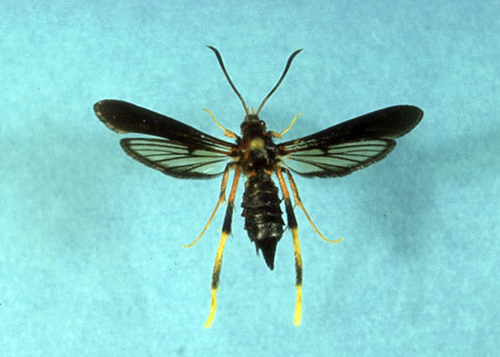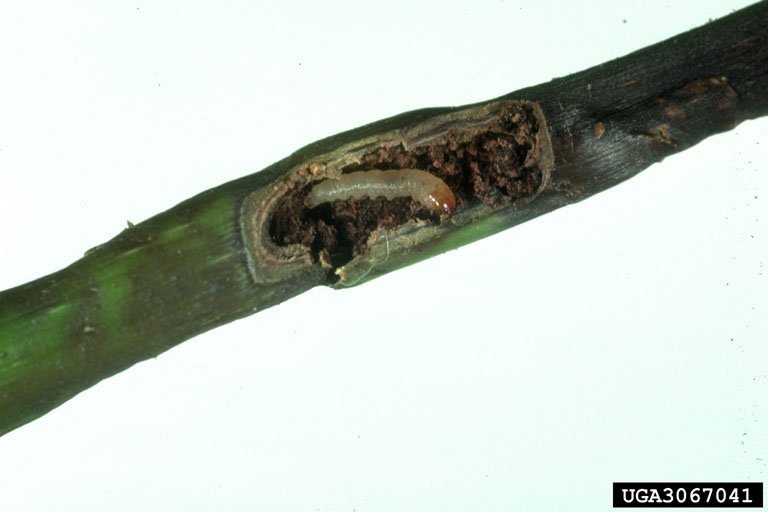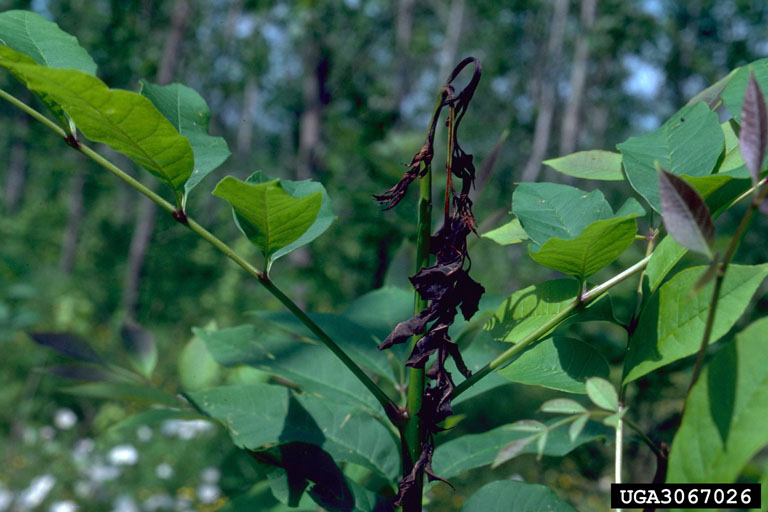Integrated Pest Management
Lilac-Ash Borer
Podosesia syringae
Pest Description
- adults: 1 – 1 1/2 inches; black with yellow markings
- look like paper wasps
- larvae: up to 1 inch; pinkish-white with a brown head capsule
Host Plants, Diet & Damage
- ash; privet; lilac
- major pest of smaller ash trees in Utah
- larvae feed on cambium tissue and sapwood
- primarily found in the trunk and larger branches
- limb and canopy dieback are common
- leave irregularly round exit holes
- pupal skins extrude from exit holes (eventually fall out)
Biology, Life Cycle & Damaging Life Stage
- overwinter as larvae in chambers in the trunk
- adults are active late-April through late-July (northern Utah)
- eggs laid on bark
- larvae bore directly into cambium/sapwood layers to feed
- one generation per year
- larvae are the damaging stage
IPM Recommendations
- Monitor using delta traps and a clearwing moth pheromone lure starting in April.
- Hang monitors from branches at about shoulder height.
- Keep trees healthy and stress free.
- Do not plant ash (Fraxinus spp.) trees.
- Use a horticultural tree wrap to protect from winter sun.
- Use renewal pruning to remove older, more susceptible branches.
- Prior to moth flight, apply an insecticide (anthranilic diamide; pyrethroid) to stem and main scaffold branches.
- Systemic neonicitinoids are not effective against this insect.
For more information, see our Lilac-Ash Borer fact sheet.




